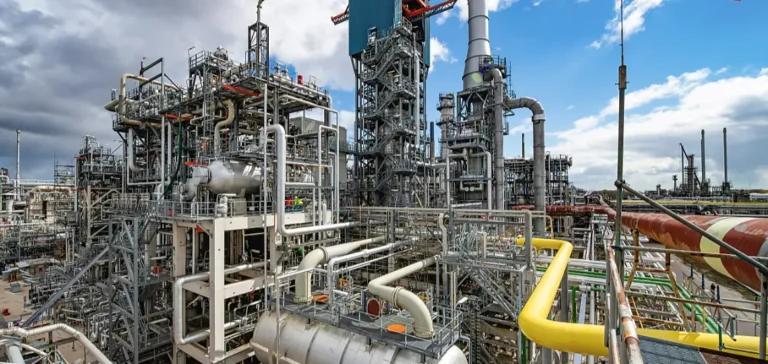The latest revision of the European Renewable Energy Directive (Renewable Energy Directive III – RED III) redefines hydrogen use requirements in industrial sectors. According to a report by Wood Mackenzie, European refineries will need to incorporate around 0.5 million tonnes of green hydrogen annually by 2030 to comply with the new obligations. This shift aims to replace nearly 30% of currently high-emission hydrogen.
The refining sector, along with ammonia and methanol production, currently accounts for 98% of global hydrogen demand. The report, titled Isn’t it ironic? How Europe’s oil refiners could offer a route to scale up green hydrogen, notes that the European Union’s political preference for green hydrogen—over blue hydrogen—tends to stabilize ongoing projects and limit cancellation risks.
Financial Commitments Already in Place Within Refining
Out of the 6 million tonnes per annum (Mtpa) of low-carbon hydrogen capacity having reached final investment decision (Final Investment Decision – FID), over $5 billion has already been allocated by European refineries. Several green hydrogen projects are being structured specifically around this segment to meet the imposed targets.
Results from the first auction conducted by the EU Hydrogen Bank confirm the sector’s readiness to adapt. Refineries submitted the highest bids, with an average levelized cost of $9.23 per kilogram. This willingness directly reflects the pressure to meet regulatory deadlines set by the EU.
National Disparities in RED III Implementation
Falling costs offer another encouraging signal: the latest European auctions show an 18% average decrease in green hydrogen prices, with bids in Germany dropping by over 55%. Nonetheless, adoption of the RED III directive remains inconsistent across EU member states.
This slow national transposition creates legal uncertainty, limiting the engagement of industrial players in certain countries. While the European framework is unified in principle, implementation obstacles at the local level continue to delay project deployment across several areas of the internal market.
Transport as a Growing Long-Term Regulatory Driver
Beyond refining, EU sectoral regulations are strengthening long-term demand for hydrogen-derived fuels. The ReFuelEU Aviation regulation mandates that 6% of fuel used in European commercial aviation be sustainable by 2030, of which 1.2% must originate from hydrogen-based synthetic fuels.
By 2050, this requirement could drive demand up to 8 million tonnes of green hydrogen, representing an annual growth rate exceeding 15%. The FuelEU Maritime regulation and the International Maritime Organization (IMO) guidelines also align with the progressive integration of marine fuels derived from hydrogen.
The Central Role of Regulatory Frameworks in Scaling Up
Renewable Fuels of Non-Biological Origin (RFNBO) must, under current EU law, represent 1% of transport energy consumption by 2030. This modest figure reflects the practical challenges of scaling supply and the logistical barriers in the value chain.
The report concludes that the successful rollout of green hydrogen will depend primarily on policymakers’ ability to ensure structural cost reductions and secure refinery offtake volumes. European refineries are thus positioned as both compliance enablers and potential market drivers in this regulatory-driven transition.






















